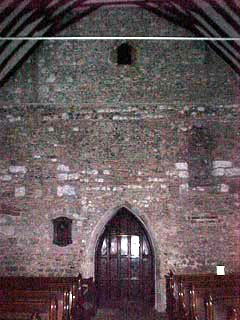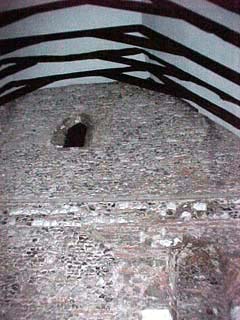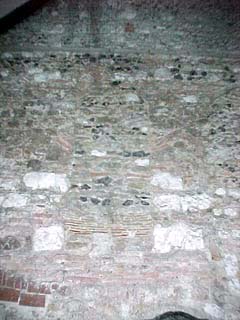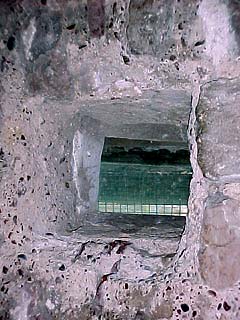|
Saint Martin's Church - description
page 3 |
|
This is the third page of the booklet about Saint Martin's Church. To go back to the last page click here. To go back to the Saint Martin's main page click here. |
|
We now enter the Church proper by a 13th century doorway.Of the size and shape of the original building, we are still not sure, but it is thought to stretch from the West wall (the wall through which we enter) and to terminate in an Eastern apse just short of the present Altar steps. This is
the door we have just entered. The portion thought to have been rebuilt first for the use of Queen Bertha is the existing Chancel from the three chancel steps to the three altar steps. This is the view ahead of us into the old Chancel
- the original church The side walls of the Nave were probably rebuilt after the arrival of St. Augustine, and the West wall, which was standing in ruinous state, incorporated to complete the Church to its original shape and size. The walls have been patched and repaired in successive ages, and in the Nave consist chiefly of Kentish ragstone, blocks of chalk with bonding courses of Roman bricks. The first 20 feet of the Chancel is composed almost entirely of Roman bricks. The oldest parts of the existing building are the entire West wall and the first part of the Chancel to the altar rails and approximately 8 feet in height, which are said to remain from the original Roman building of the fourth century. The side walls of the Nave are Saxon from St. Augustine's time, but built on Roman foundations. The upper parts of the Chancel walls are Saxon. The portion Eastwards from the altar rails is late twelfth or early thirteenth century, but very much restored about the middle of the last century. ^ In the West wall high above the door by which we enter, one can trace the outline of a rough arch or opening.
This may have been a circular or two-light window over a different and earlier doorway. On either side of this arch we have a Roman window, the lower half of which is original. The top portion is either late Saxon or early Norman. The turn of the original arch made with Roman bricks can be seen half-way up the existing window. These windows and the central opening were filled up when the tower was erected. On the right of the door, about 2 feet from the floor, is a Lepers' Window of Norman date.
^ |




